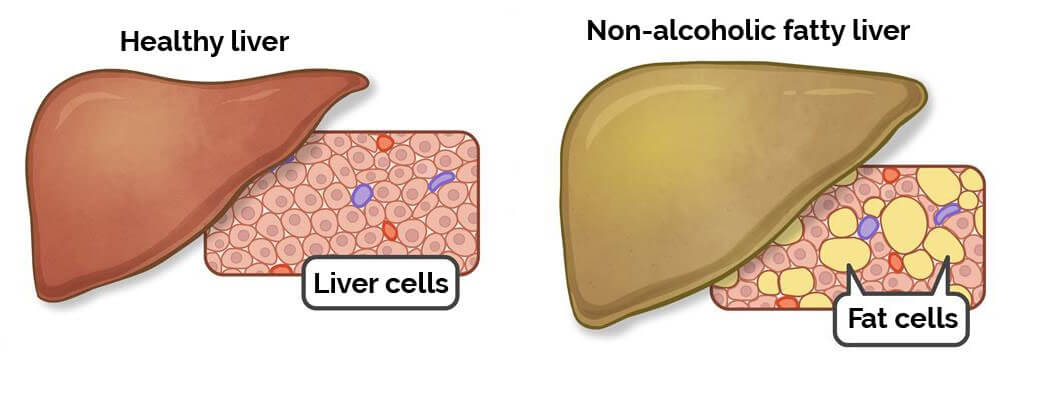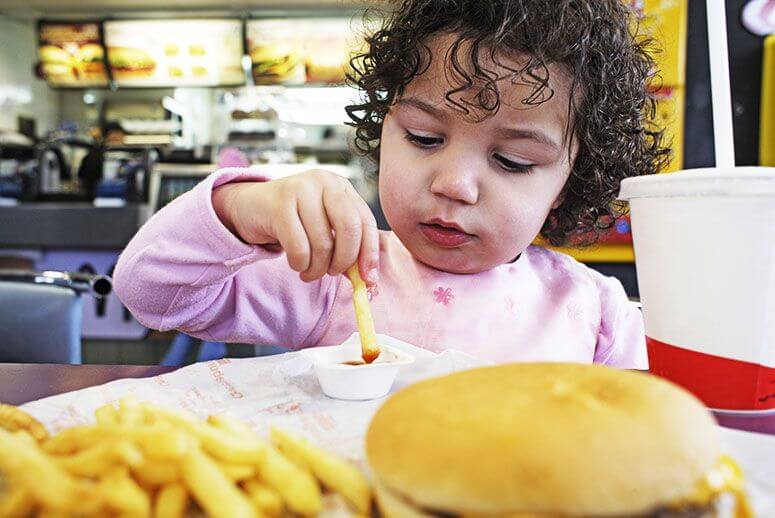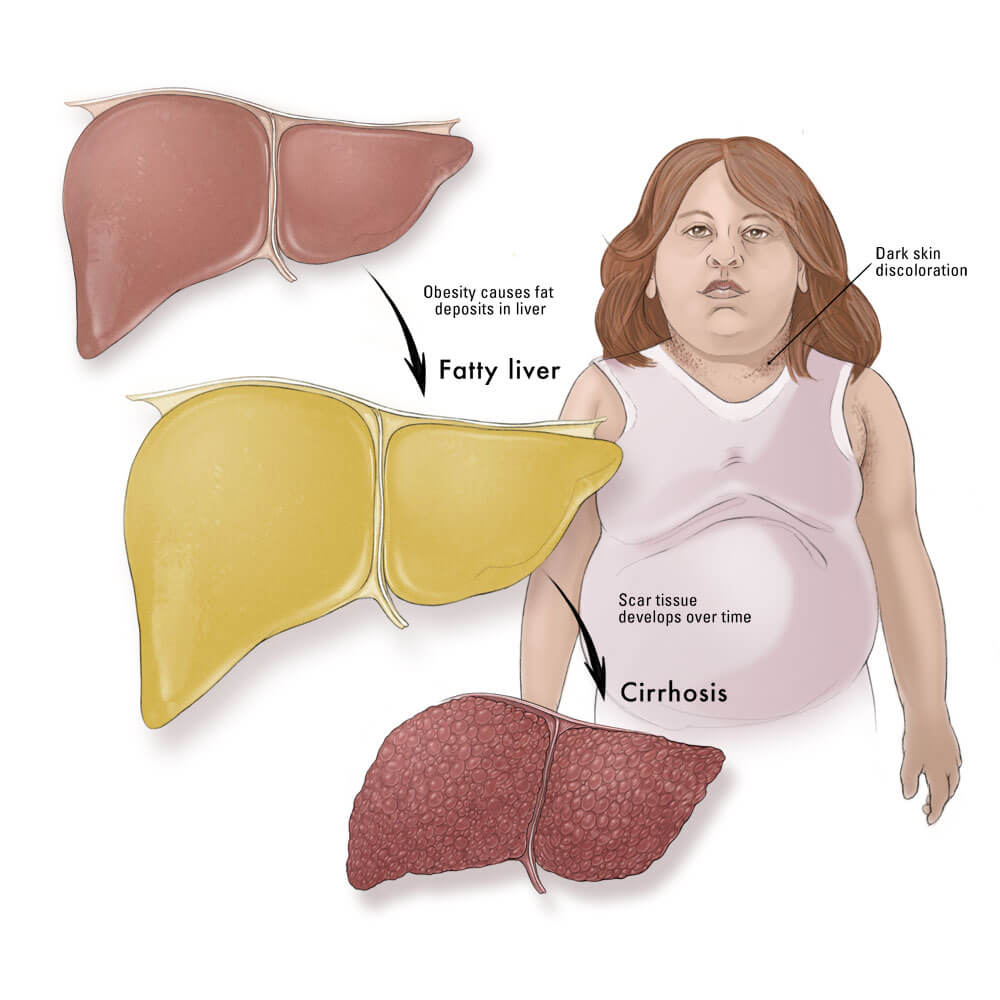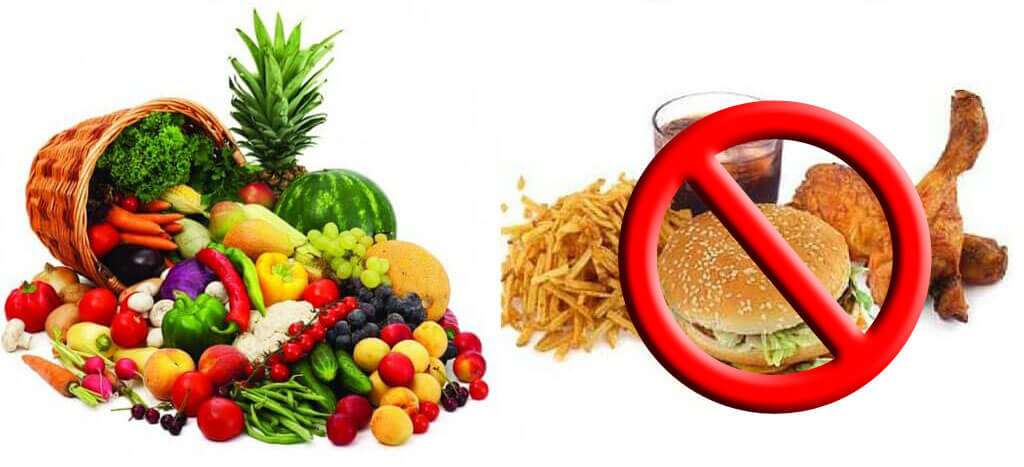Non-alcoholic fatty liver (NAFLD) is a type of fatty liver disease, which is characterized by accumulation of fat in the liver in the absence of other competing disorders of liver and no alcohol consumption. Even kids do have fatty liver just as adults, but the area in the medical field remains under-studied, under-recognized and, possibly undermanaged.
NAFLD in Children
NAFLD
Fatty Liver Disease in Kids

At what age kids will develop NAFLD?
There are cases of NAFLD in kids as young as 2 years and NASH associated liver complications like cirrhosis in patients as young as 8 years of age. But in general most of the cases are diagnosed when the child is above 10 years old and the average age of diagnosis is 11 to 13 years of age. NAFLD in most cases is diagnosed when the NAFLD associated co-morbidities like insulin resistance and Type 2 diabetes are being investigated in kids.
How common is NAFLD in Kids?
Increasing obesity rates in children as young as 3 years of age has led to increasing prevalence of NAFLD in kids. It is difficult to ascertain a certain figure for prevalence of NAFLD in kids because of scarcity of data and under-recognition of the disease in the medical fraternity.
Is your kid at the risk of NAFLD?
Your kid may be at the risk of NAFLD and NASH if he/she has any of the following
Excess calorie intake and sedentary life style – Excess calorie intake with little or no physical activity in day to life will put your child at increased risk of NAFLD
Overweight/obese – Obesity is closely associated with NAFLD and NAFLD shares commonness with metabolic disorders like insulin resistance, type 2 diabetes, high fat levels in blood and high blood pressure. In children below 3 years of age obesity usually do not progress to conditions like NAFLD or NASH but do suggest an underlying hormonal dysfunction
Sleep apnea – Sleep apnea is a condition where the sleep is interrupted several times due to obstruction of airway
Insulin Resistance – Insulin resistance is a condition closely associated with obesity, where the cells become insensitive to the insulin hormone resulting in disturbance in glucose metabolism. The condition can be identified with signs like darkened skin at the back of neck, and folds of joints and skin in obese kids. The condition is called Acanthosis nigricans and has been reported in 33%–50% of kids with NAFLD
Genetically prone – If any member of the family like parents or siblings has a history of NAFLD or NASH then there are high chances that the kid may have NAFLD
Hormonal Disorders – Hormonal disorders like thyroid under functioning or polycystic ovarian disease may also put your child at the risk of NAFLD

How does NAFLD present in Kids?
Just as in adults, NAFLD and NASH in kids do not show any symptoms. Often it is diagnosed accidently during physical examination or routine blood testing.
Few kids may report non-specific symptoms like
- Abdominal pain
- Extreme weakness
- Headaches
- Extreme tiredness
- Irritability
- Difficulty concentrating
On clinical examination there may be sensitivity in upper right abdomen region but practically it is difficult for the doctor to check the sensitivity due to excess fat in the tummy region of the kids. Kids show symptoms only when there is significant damage to the liver.
How is NAFLD in kids diagnosed?
NAFLD is diagnosed by
- Blood tests like the liver functioning tests (LFT) and serum biomarker tests
- Ultrasound or CT/MRI imaging
- NASH can be diagnosed by biopsy of liver
Who needs to be diagnosed?
You should suspect NAFLD and consult a physician, if your kid is above 10 years of age and has any of the following
- Overweight or obese
- Elevated liver enzymes (ALT and AST)
- Other co-existing disorders or risk factors
- An abnormal result of liver function tests
- A family history of NAFLD
Why you should not delay diagnosis of NAFLD in kids?
It should be noted that in adults simple fatty liver/NAFLD might not pose a risk of cirrhosis and liver failure, but in kids
- Simple fatty liver can progress into more severe forms of NAFLD like NASH and hepatic fibrosis in kids
- Kids with NAFLD tend to have more liver complications like cirrhosis
- Kids who progress to adulthood with NAFLD have greater risk of liver cancer and heart disorders

How is NAFLD treated in kids?
Both NAFLD and NASH are managed by lifestyle modifications with an aim to reduce weight
Diet Modifications
Calorie restriction with elimination of sugar sweetened beverages and food products, fast foods and high fat content foods like fried foods and minimizing portion sizes, all with expert advices only. It is to be noted that currently there is no particular recommended diet for NAFLD.


Exercise
Incorporate physical activities to encourage the kid to play outdoors, in order to provide adequate physical exercise in day to day.
It is important to identify kids with risk factors for NAFLD at the earliest and provide interventions to manage, reverse and prevent NAFLD to progress into more complex forms manifesting with various serious complications.
Reference:
- Chalasani, N. , Younossi, Z. , Lavine, J. E., Charlton, M. , Cusi, K. , Rinella, M. , Harrison, S. A., Brunt, E. M. and Sanyal, A. J. (2018), The diagnosis and management of nonalcoholic fatty liver disease: Practice guidance from the American Association for the Study of Liver Diseases. Hepatology, 67: 328-357. doi:10.1002/hep.29367
- Dusheja A et al. (2015). Non-alcoholic Fatty Liver Disease and Metabolic Syndrome-Position Paper of the Indian National Association for the Study of the Liver, Endocrine Society of India, Indian College of Cardiology and Indian Society of Gastroenterology, 5(1):51-68. doi: 10.1016/j.jceh.2015.02.006
- Mitsinikos, T. and Kohli, R. (2018), Pediatric nonalcoholic fatty liver disease. Clinical Liver Disease, 11: 95-97. doi:10.1002/cld.712
